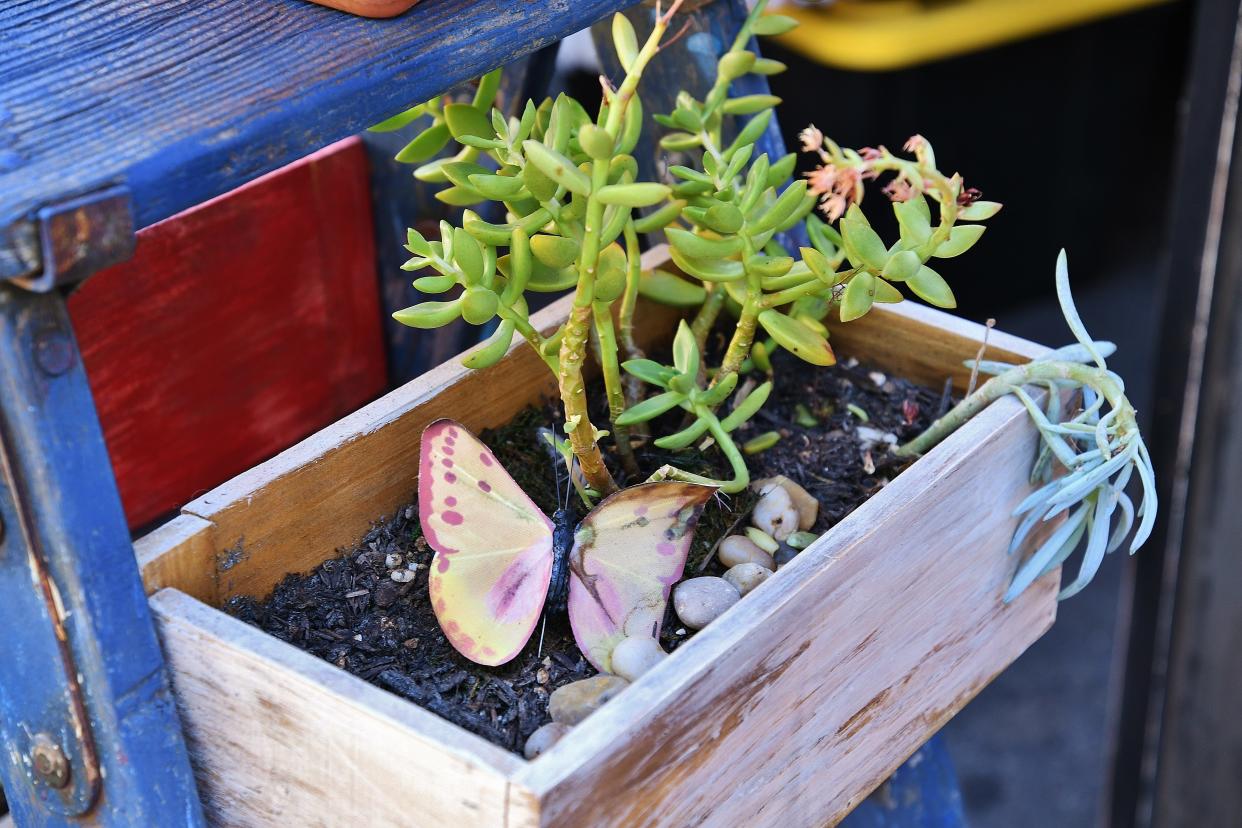Cacti and succulents for the indoors: Master Gardeners

We all enjoy having beautiful plants indoors and outdoors, but with our busy schedules, plants can be the last things on our mind. We buy them, forget to water them, and then replace them when they die, or we may give up growing plants completely.
Sound familiar?
Succulents and cacti might be the solution.
Cactus is a succulent plant that can store moisture, but not all succulents are cactus. Succulents do not belong to any one plant family, but are represented in nearly thirty different ones. Cacti can be easily identified. With rare exceptions, they do not have leaves. Most, but not all, cacti have spines and bristles. They may have long hair or a wooly covering instead. Since nature has provided them with built-in "storage tanks", they can be underwatered for weeks at a time.
Don't be fooled into thinking cacti are dull. Succulents and cacti offer the most variety in shapes and leaves, colors, designs, patterns, and growth habits in the plant world! Succulents are natives of deserts, rain forests and semi-arid regions of North and South America. Some plants have common names like crown of thorns or golden barrel, but many do not, so it's not unusual to see them sold by their botanical name.
Succulents are noted for their unusual foliage, like the haworthias and gasterias or the popular "jade plant", Crassula argentea. The echeverias and Dudleya pulverulenta are exquisite, with chalk-white foliage and leaves lined with red edges.
Succulents can have beautiful flowers like Kalanchoe blossfeldiana, a popular Christmas plant with striking red flowers, and Hoya, known as "wax plant" which has clusters of fragrant waxy white flowers. Colorful rebutias are crowned with bright red flowers in the fall.
To grow indoors, place plants where they will get the best light. To get flowers from your plants, like the parodias and lobivias, use east and south exposures. West window plants are jade plant, echeveria hybrids, and Hoya carnosa. North windows are best for gasterias, haworthias, rebutias, and Sansevieria hahnii.
In nature cacti and succulents are drought resistant because they can store water, but remember that indoor conditions are quite unlike those outside. For one thing, roots cannot stretch far for moisture, thus proper watering is vital.
Small pots and clay pots dry out faster. When the soil is dry at least an inch down, water until it runs out the drainage hole, then don't water again until the top is dry. You'll probably water more in the summer when the plant is in active growth and then taper off in the fall to occasional watering in winter. Plants need a rest from watering. If you water too much in winter, your plants will bear abnormal growth and not bloom in summer. Fertilize succulents and cacti very sparingly. Overfeeding can kill these slow growing plants or force them to grow at an unnatural rate.
Some of the best to try
Indoor plants: Peperomia gandis has thick shiny leaves, similar to a watermelon plant. Chirita sinesis is related to the African violet. Slow growing, its striking leaves form a rosette of green leaves with white designs. Jade plant is an ideal container plant with shiny thick rubbery leaves and a bonsai appearance.
Hanging plants: Graptopetalum aphrodite has fleshy leaves that form rosettes, and small yellow flowers. It can also be used as a ground cover. "Burro's tail" is formed by trailing stems that look similar to columns of big grains of rice. Crassula perforata variegate, is called "string of buttons" because the opposing pairs of trailing leaves appear threaded on the stems. Sedum sieboldi is winter hardy yet graceful, with dainty notched leaves, pink flowers in autumn, and a trailing habit that makes it one of the most popular of all succulents for hanging baskets.
Succulents and cacti’s wide variety of plant and leaf shapes, sizes and colors make amazing indoor displays, with the added benefit of being easy to grow.
Are you interested in becoming a Master Gardener? The UC Master Gardener program of Tulare/Kings Counties is recruiting! Our next class runs January 26 through May 24, 2024. We will be holding a mandatory orientation on Fri., Oct 13 @ 1 pm. Register online: https://ucanr.edu/sites/UC_Master_Gardeners/ -- select “Become a Master Gardener”.
Please call our office with any questions (559) 684-3300
The Tulare-Kings Counties Master Gardeners will answer your questions in person:
Visalia Farmer’s Market – cancelled until Sept. 9, due to the market moving to a new location.
Hanford Farmer’s Market – 4th Thursday, May – Sept, 5:30 – 9:00 pm, 219 W. Lacey, Hanford
Sat., Sept. 2, 10 am – 1 pm Plant Clinic, Ace Hardware, 2230 W Walnut Ave., Visalia
Questions? Call the Master Gardeners:
Tulare County: (559) 684-3325, Tues & Thurs, 9:30-11:30;
Kings County: (559) 852-2736, Thursday Only, 9:30-11:30 a.m
Visit our website for past articles, sign up for our e-newsletter, or email us with your questions: http://ucanr.edu/sites/UC_Master_Gardeners/
Facebook: https://www.facebook.com/mgtularekings14/ ; Instagram at: @mgtularekings
This article originally appeared on Visalia Times-Delta: Cacti and succulents for the indoors: Master Gardeners

